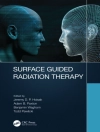This work is an overview of the state of art on Ageing of Materials and structures in the world. Ageing of materials is a natural phenomenon. Each material we use will age. This ageing will influence the performance of the object where the materials is used. Furthermore, the ageing will be affected by the surroundings in which the object is placed. The main focus of the book is on materials used in infrastructure, energy, buildings and industry. The book in effect establishes the definition of ageing and its main research topics that are relevant for society.
Spis treści
Chapter 1. Urgency and Challenges of Ageing in Science and Engineering.- Chapter 2. Investigation of Long-Term Behaviour of Elastomeric Seals for Transport and Storage Packages.- Chapter 3. What Can be Learnt from Ageing in Biology and Damage-Tolerant Biological Structures for Long-Lasting Biomimetic Materials?.- Chapter 4. Mechanics of Ageing—from Building to Biological Materials.- Chapter 5. The Relevance of Ageing for Civil Infrastructure: The Profession, The Politics, The Classroom.- Chapter 6. Study on Triage for Deteriorated Concrete Structures by JSCE-342.- Chapter 7. Ageing in Shallow Underground RC Culverts and Tunnels.- Chapter 8. Radiation Shielding Properties and Freeze-Thaw Durability of High-Density Concrete for Storage of Radioactive Contaminated Soil in Fukushima.- Chapter 9. Ageing Behaviour of Neutron/Irradiated Eurofer97.- Chapter 10. Ageing Management for Extended Storage of Spent Nuclear Fuel.- Chapter 11. Forever Young or Ageing Naturally?.- Chapter 12. The Noble Patina of Age.- Chapter 13. The Ageing of the Creation.- Chapter 13. Modeling Ageing Cementitious Pore Structure.- Chapter 14. Introduction to Structural Ageing-Specific Functions for Computational Models Based on Synaptic Networks.- Chapter 15. Stochastic Models for Risk and Failure under Ageing.- Chapter 16. Statistical Models for Interval-Censored Time-to-Event Data.
O autorze
Klaas van Breugel is currently a full professor at the Faculty of Civil Engineering & Geosciences at the Technical University Delft, the Netherlands. He holds an MSc and a Ph D in Civil Engineering from Delft University of Technology. His principal research interests include the design of concrete structures under extreme load conditions like fire, impact, blast loads and cryogenic loads, modelling of hydration and microstructure development in young concrete, tightness issues and durability, and service life prediction for concrete structures. Professor van Breugel is a member of several international organisations, including the ACI, RILEM, IABSE and fib. In 2014 he was nominated as a RILEM Follow, in recognition of his exceptional scientific contributions to RILEM’s work.
D.A. Koleva is an assistant professor at Delft University of Technology, Faculty Ci TG, M&E, the Netherlands. She holds an MSc in Chemical Engineering and a Ph D from Delft University of Technology. Herexpertise and main research interests are in the fields of corrosion and protection of metals, steel, and reinforced concrete. She has conducted pioneering research on the synergetic evaluation of electrochemical phenomena and cement-based microstructures for corrosion control in reinforced concrete. She has authored, co-authored and co-edited more than 120 articles, book chapters and books on the subjects of steel corrosion, galvanic coatings, cathodic protection and concrete durability.
Anton van Beek works at SKG-IKOB as the head of the laboratory. His main research interests include testing materials, components and systems mainly for the construction industry, targeting durability issues, and performance after ageing. He completed his MSc and Ph D degrees at Delft University of Technology, where his main topics were young concrete and the dielectric properties of concrete. Recently he worked as the director of the Ageing Centre at the Department of Civil Engineering, Delft University of Technology. He has published more than 50 papers and articles in various national and international journals and books on the topics of concrete, monitoring, maintenance, asset management, and ageing of materials and structures.












